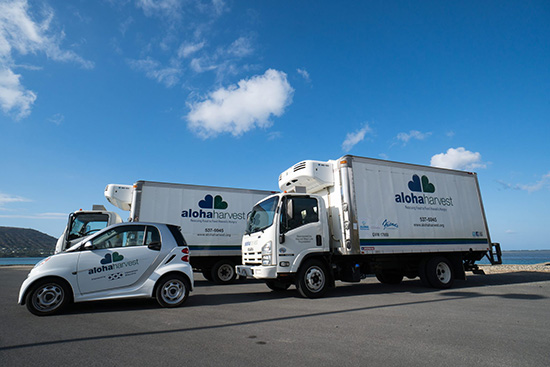
Windward O‘ahu’s Stairway to Heaven hiking trail has again become a focal point of controversy with the upcoming Environmental Impact Statement to be published this May. Based on the statement, a decision will be made as to whether the stairs will be taken down or left up.
The trail is currently not open to the public and has been a contentious issue in the Crown Terrace neighborhood as hikers brave the darkness in the pre-dawn hours to elude the security guard that monitors the area.
Many times amid barking dogs, hikers park their vehicles and prepare themselves for the climb. Residents have also complained that hikers have trespassed on their properties coming from and going to the base of the stairs. Breaking the trespassing law has a hefty price tag of a $1,000 fine.
As recently as December 2015, a teen from the Big Island went missing after posting pictures on social media indicating that he was on the trail. After extensive searches by the Honolulu Fire Department and the military, he was never found.
With the advent of digital cameras such as the GoPro and smartphones with high definition capabilities, the hike has developed a reputation worldwide with hiking enthusiasts and adventure seekers and has become one of the most popular hikes on the island.
Ascending 3,922 steps up a steep ridge in Haiku Valley, it lies in the backyard of WCC. The breathtaking views and panoramic scenery from the summit have created many proponents over the years who are supporting efforts to preserve and maintain the stairs.
Haiku Valley has a long history that goes back to ancient Hawaiʻi as Hawaiians used it as a kind of apothecary and source of healing medicines and plants. Before western contact, it was an important resource that was used by Kahuna Laʻau Lapaʻau (medicinal and spiritual healers).
It was once a home for an active, flourishing Hawaiian community and numerous heiau (sacred sites). Kahekili Heiau was located at the top of the valley and was built to honor the god of thunder and lightning.
In 1942, the U.S. military obtained the land usage rights and built the wooden stairs for easy access to the top of the mountain, where they were building the Haiku Radio Station. The military used the natural shape of the valley and stretched cable across it to create an antenna to transmit low frequency radio signals to ships that were then operating throughout the Pacific.
Then in the 1950s, the station was decommissioned and the U.S. Coast Guard used the same site as an Omega Navigation System station, the first global-range radio navigation system operated by the United States in cooperation with six partner nations. At that time, the stairs were replaced by sections of metal steps and ramps.
In 1987, the stairs and trail were closed to the public after a severe storm knocked out a small portion of the stairs and it became unusable. Even though closed, hikers continued to ignore the no trespassing signs.
As the Haiku stairs started gaining more attention, residents around the base of the stairs became wary of the amount of traffic going through their neighborhood. Today what remains of the site is stewarded by the Koʻolaupoko Hawaiian Civic Club.
Local resident Kevin Louie stated in the documentary film Should Heaven Be Open? by WCC alumnus Kyle Motonaga, “I don’t think it should be open unless they can guarantee everyone’s safety. People don’t realize it becomes a steep vertical ladder at some points with steep cliffs on both sides … Since it’s not being used by the military anymore, I think they should tear it down but then again that could be too much money and too much work … ”
President of Friends of Haiku Stairs Vernon Ansdell said, “The stairs provides the perfect opportunity to see the whole ahupua‘a from the back of the valley all the way down to the fishponds. I don’t think there is anywhere else in the world where you can see the whole dynamic of the ahupua’a system from mauka to makai.”
Ansdell proposes that the stairs be used as an educational and cultural site. Having a group to take responsibility for the maintenance, security and liability would be key to making it a viable resource.
“Having docents and volunteers as well as a robust waiver form, really good signage and a maintenance program to ensure the stairs are safe. If you had that in place, it could be doable,” he said.
At present there are many entities working on a solution on what is to become of the trail. This question is one for the combined land owners–The Kamehameha Schools, Board of Water Supply, State of Hawai‘i as well as the Department of Hawaiian Home Lands–to figure out once the Environmental Impact Statement is complete.
by Ian Jenss, Ka ‘Ohana Staff Reporter




